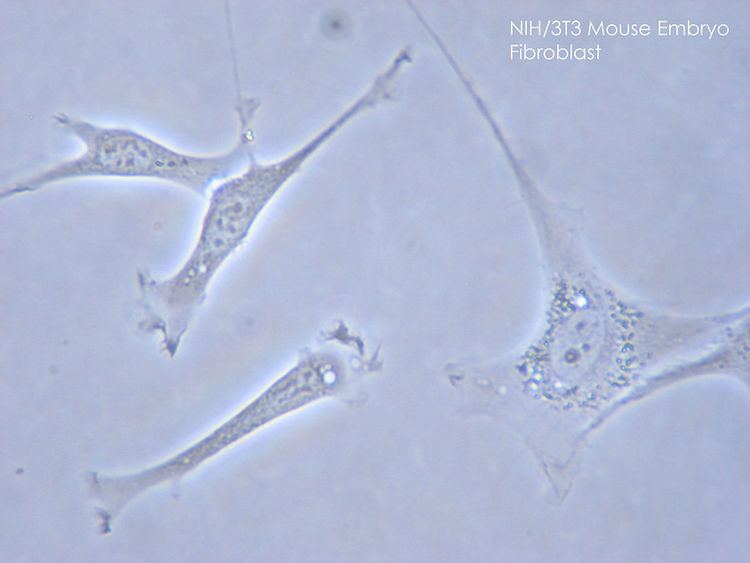 | ||
3T3 cells come from a cell line established in 1962 by two scientists then at the Department of Pathology in the New York University School of Medicine, George Todaro and Howard Green. The 3T3 cell line has become the standard fibroblast cell line. Todaro and Green originally obtained their 3T3 cells from Swiss albino mouse embryo tissue.
Contents
Nomenclature
The '3T3' designation refers to the abbreviation of "3-day transfer, inoculum 3 x 105 cells." This cell line was originally established from the primary mouse embryonic fibroblast cells that were cultured by the designated protocol, so-called '3T3 protocol'. The primary mouse embryonic fibroblast cells were transferred (the "T") every 3 days (the first "3"), and inoculated at the rigid density of 3 x 105 cells per 20-cm² dish (the second "3") continuously. The spontaneously immortalized cells with stable growth rate were established after 20-30 generations in culture, and then named '3T3' cells. Specifically, "3T3-L1" is one of the current lines.
Characteristics
Swiss 3T3 can be inhibited by temazepam and other benzodiazepines. These cells are also contact inhibited. The cells are sensitive to sarcoma virus and leukemia virus focus formation. 3T3 cells can be transformed with SV40 and some other polyomaviruses.
Expression
Lysophosphatidylcholine (lyso-PC) induces AP-1 activity and c-jun N-terminal kinase activity (JNK1) by a protein kinase C-independent pathway.
Cytogenetics
3T3 mouse cells are hypertriploid. The modal chromosome number is 68, which occurs in 30% of cells. Higher ploidies occur at a much lower rate of 2.4%.
Uses
3T3 cells are often used in the cultivation of keratinocytes, with the 3T3 cells secreting growth factors favourable to these kinds of cells.
